The belt on the Indesit washing machine comes off
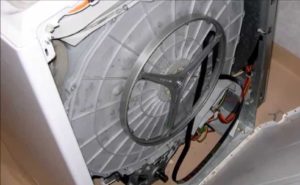 In order for the drum to spin when the motor is running, something is required that will connect them to each other. This element in a washing machine is the belt. It is an integral part of almost any washing machine, and Indesit is no exception. Therefore, if the belt falls off the drum on an Indesit washing machine, you need to find out how and why this happens and correct the situation.
In order for the drum to spin when the motor is running, something is required that will connect them to each other. This element in a washing machine is the belt. It is an integral part of almost any washing machine, and Indesit is no exception. Therefore, if the belt falls off the drum on an Indesit washing machine, you need to find out how and why this happens and correct the situation.
Why doesn't it hold?
First of all, you need to look inside the washing machine and make sure that the problem is in the belt. If this is the case, then here are the most popular reasons for the belt slipping:
- if the machine regularly operates under loads that it cannot handle according to its configuration, the belt will sooner or later fall off. If this happens for the first time, just pull the part back and enjoy the operation of the washing machine;
- If, when the drum is running quickly, the belt falls off not for the first time, it may have stretched. There is only one way out - replace it with a new one;
- Drive slippage can occur not only due to the drive itself, but also due to a loosely secured motor: the latter will periodically change its position and thereby weaken the belt. To fix the problem, secure the motor more securely;
- loose pulley fastening is also the reason for the belt to fly off. All that is required is to re-tighten the pulley;
- the pulley or shaft may be deformed (often the belt itself, flying off, bends them). In this case, you need to buy a new part;
- the shaft is connected to the body of the washing machine using a cross. Consequently, if the crosspiece is damaged, the belt will fall off. The solution is to buy a new cross;
- worn bearings can cause the drum to move skewed, which will first lead to a loosening of the belt and then to its disconnection;
The belt may break if the machine is turned on after a long period of inactivity; this is due to the fact that the drive dries out in the absence of work.
Or maybe we should turn to the masters?
If tightening the belt seems like an impossible task to you, and in general any repair and disassembly of equipment makes you shudder, you can take the machine to a technical service. This option is better than a private master, and here’s why.
- All work performed is guaranteed.
- Large services have a large “base” of parts, so if replacement is necessary, they will use “original” spare parts.
- In service centers, the technicians have more experience.
But it is worth noting that a problem with a belt is not such a serious problem that it cannot be fixed with your own hands. Even if you have never repaired household appliances yourself, try to do it with the help of our tips.
Before disassembling the machine, make sure that the warranty period has expired. For Indesit brand washing machines it usually ranges from 1 to 3 years.
DIY installation
When replacing and installing a belt, it is not so much experience and dexterity that is required, but simple physical strength: it is very difficult to tighten the belt. If you are confident in your abilities, act consistently:
- Unplug the washing machine.
- Remove the bolts from the back panel to remove it.
- If the belt really fell off, we will put it back. First, we install it on the shaft, and then on the pulley. In this case, first the belt is tensioned not over the entire circle, but over a part. Then we turn the pulley and carefully adjust the belt completely around.After this, make sure that the belt is tight by turning the pulley several times.
- If the drive is torn or stretched, you will have to buy a new one. Just write down the model of your washing machine and go to your nearest home appliance parts store or service center. After purchase, tighten the belt as indicated in point 3.
- Once repaired, reinstall the back panel and re-tighten the bolts.
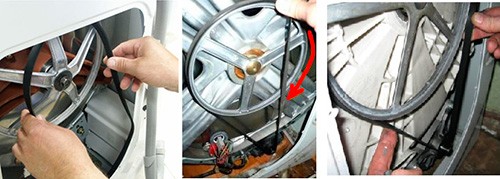
If the problem persists
Repeated belt slippage may indicate problems in other parts of the machine. For example, if the pulley is deformed, putting the belt in its original position will not help - sooner or later it will fly off again. The problem is further complicated by the fact that the deformation is not always noticeable to the eye. The advice here is this: if the belt loses its fixation not for the first time, contact a specialist.
Since one of the most common causes of belt failure is increased load, try not to exceed the washing machine's load limit. Read the instructions and all attachments that come with the equipment to ensure that all safety precautions are followed (rather than throwing them away immediately after installing the equipment). If used correctly, the machine will serve you faithfully for many years.
Interesting:
Reader comments
- Share your opinion - leave a comment


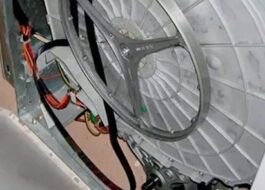
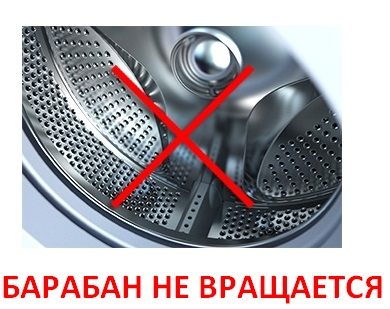
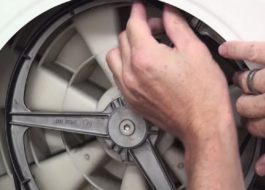
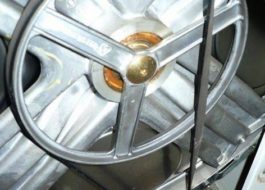















Add a comment